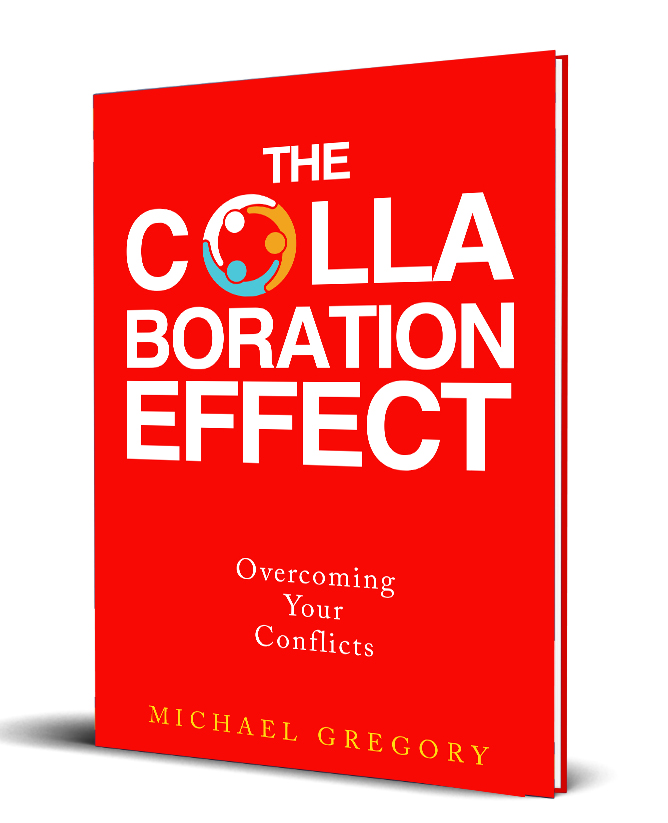
As a leader and manager your role is to promote productivity, be there to help, and support your team. So, what happens when an unhealthy conflict emerges. An unhealthy conflict erodes trust, drains you and your team members of energy, and takes time away from you and team members to address these concerns. When this happens this lowers morale. People respond in various ways including shutting down, becoming angry, not collaborating, looking out for themselves, reducing business metrics, lowering customer satisfaction, and disenfranchising others. This can become contagious. What can you do? That is the focus on this commentary.
Don’t hate
When someone goes below the line and is involved in an unhealthy conflict at work everyone suffers. As a manager you may have tried to deal with it, become frustrated, and at times you have felt like you just want to “kill them”. Not really, but figuratively you can’t believe the behavior and you are at your wits end. You are so angry you just want them to leave and for this situation to go away. You can’t believe what they are doing, but you can’t take disciplinary action or fire them for one of a host of reasons. What can you do?
First, recognize your own emotions for what they are. Validate how you feel. You have a right to feel frustrated and angry Then pause and reflect. You are a leader or a manager. What do you need to do? You need to focus as a leader. You may even want to say the word “focus” several times to yourself. That may help. Now instead of hating the other party and wanting “to kill” the other party, focus on not hating the other party and instead focus on what actions you need to take.
Don’t demonize the other party. They are human and so are you.
You don’t know what is going on in their life. Focus on compassion. That is be calm, be confident, and be competent with an interest to be there to help. That is your role as a leader of manager.
Realize you cannot solve every problem. That is not your role. If you have an employee assistance program you may need to refer this employee to them. You may want to talk with your peers, your mentor, and your boss about your situation and ask them for advice. Overall, you need to be there to help the person and the situation. Keep your central focus to help the other party. How can you help?
Try to connect
From The Collaboration Effect you know the keys to collaboration are authentic, connecting relationships, listening actively, and educating judiciously in order to build bridges and negotiate closure. The first element is to build authentic connecting relationships. The same holds true in this situation. Practice listening actively. That is paraphrase, ask open ended questions, summarize, suspend judgment, empathize, and do not offer advice. Listening actively is gain understanding. Be curious. Work to build trust. Check your assumptions. Be more interested in them more than addressing your interests. Yes, this is hard. You may want to practice this ahead of time with a role play with someone you trust and respect as a good listener.
The bottom line is that you want to really connect with them.
You will not be able to understand them if you have not connected and listened to them. This takes some time. Of course, if you had done this previously, all the better. If not, now is the time to really find out what is going on and be there for the other party.
As a leader or manager communicating with your employees is the most critical task you have. Some 90% of managers think they are good at it, but only 30% of their employees think their managers are good at it. There is a reason for this disconnect and it ties in directly with being there to help, having authentic connecting relationships, and listening actively to understand. Find out what makes them tick and what it is they care about. This will provide you with the insight you need to help. Then you can work with the other party and help them redirect their energy into a more positive light.
Redirect energy
After addressing authentic, connecting relationships, and listening actively (again without providing solutions), ask the other party to reflect on a future state without the negative conflict. Do not tell the person what to do? Rather ask questions that may help the other party to see alternatives that they could try or implement. What can they do? What can you do?
Most importantly, what can we do? Are there ways to reduce the stress associated with the activity?
By focusing on this as an opportunity, and a chance to improve the relationship with the other party for the good of the team, and the organization, this can cause the parties to work harder to bury the hatchet and find ways to work more collaboratively with each other.
Finding ways for the parties to do the same thing you have done with the parties by building connecting relationships and listening actively may help. This can be done as a total team exercise so as not to directly address the two parties involved, but rather to have the entire team function more positively as a team.
If the negative behavior continues, what about the activities and people involved? Is it possible to put the individual on teams without having major interactions with each other? Reducing time between two individuals who simply cannot get along with each other, may be a viable solution. In a worst-case scenario, maybe one of them is removed from the project or the team.
Conclusion
There is no one solution that fits all. However, recognizing your own emotions and calming yourself is a first step. Focus on the problem. Don’t blame yourself, blame the other party or others. Rather, consider the ideas presented here to help you help the other party. Do not demonize the individual(s) involved. Your attitude matters. Your attitude is key. Be there to help. If you don’t approach this with a positive attitude to help, chances are you are in for more of the same. Make the additional effort to authentically connect. Be there for them. Listen actively to understand where they are coming from and what is going on in their life. Only by truly trying to understand their situation can you help going forward. Finally, redirect the negative energy in a positive direction. Following these steps can turn things around. Hopefully, these ideas will help you. Try them out and let me know how it turns out. They worked for me. I am always open to additional ideas too. I would love to hear from you.
About the author
Mike Gregory is a professional speaker, an author, and a mediator. You may contact Mike directly at mg@mikegreg.com and at (651) 633-5311. Mike has written 12 books (and co-authored two others) including his latest book, The Collaboration Effect: Overcoming Your Conflicts, and The Servant Manager, Business Valuations and the IRS, and Peaceful Resolutions that you may find helpful. [Michael Gregory, ASA, CVA, MBA, Qualified Mediator with the Minnesota Supreme Court]

